Results 1 to 10 of 14
Threaded View
-
06-24-2014, 06:53 PM #1Junior Member

- Join Date
- Jun 2014
- Location
- Norwich, England
- Posts
- 5
Thanked: 0 Penny for your thoughts - does this need a regrind or a load of elbow grease on a 1k
Penny for your thoughts - does this need a regrind or a load of elbow grease on a 1k
I bought this razor from an antique store in England and have no idea whether it's any good; it is stamped HALL BRADFORD, with Bradford being a city in West Yorkshire, England. I can't find any on the internet, so I presume it's pretty rare, possibly because they're no good?
It was as blunt as a butter knife originally, so I bought a Dovo Best Quality to tide me over whilst waiting until I have time to do something with it.
I bought the 1k, 5k, 8k, and 12k Naniwa Super Stones as per one of Lynn's youtube videos.
I followed the advice given in the video and a bit of the blade became almost sharp; my gut feeling is that it may require a lot more effort on the 1k stone before moving on to the others. Then again, I'm wondering whether or not it's so bad that it may need a regrind... or it may be so bad that it needs throwing in the garbage bin...
The cutting edge seems to be slightly curved along its length rather than straight, and the polished part of edge of the blade is deeper in the middle. Presumably the blade would have originally been straight with an equal edge depth?
Also, if I press on the heel the toe rises slightly off a flat surface, and if I press on the toe the heel rises (I'm assuming that the Naniwa stones I bought came flat...). Is this really bad?
I like it, so would like to develop some skills in order to restore it, but I don't want to waste time on something that's junk. Can anyone tell from the photos I've attached what it needs in order to be restored? I can add more photos if the angles on these aren't adequate.
Many thanks for any advice provided.
Harry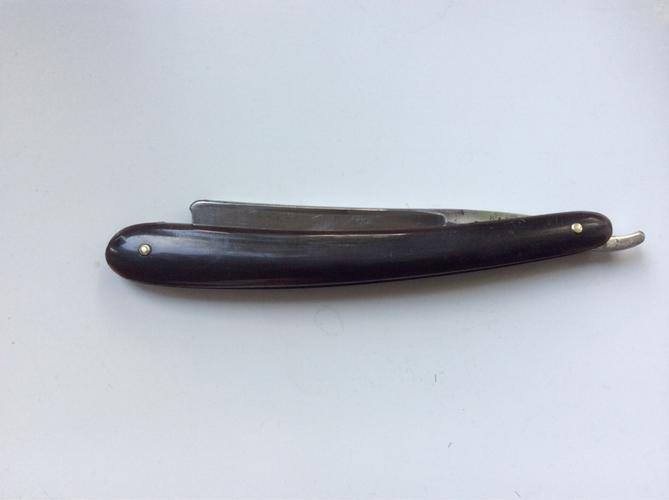
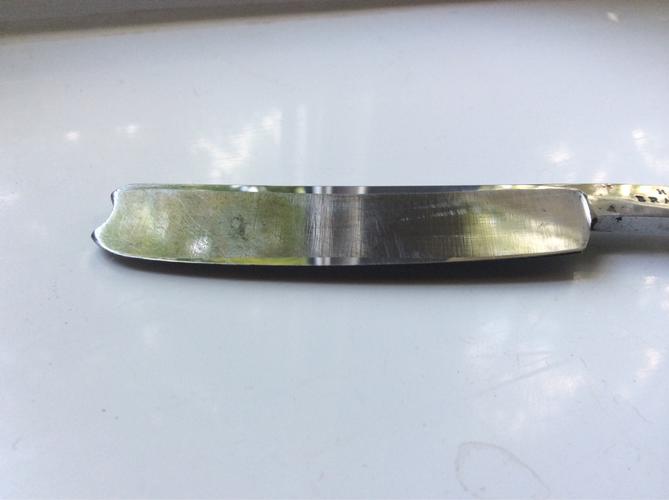
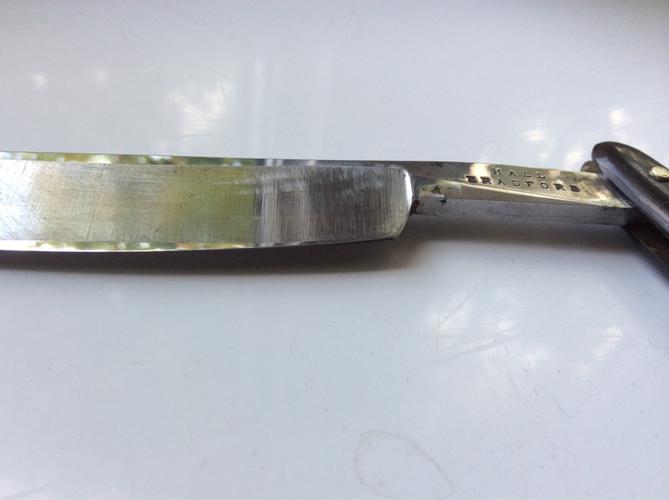
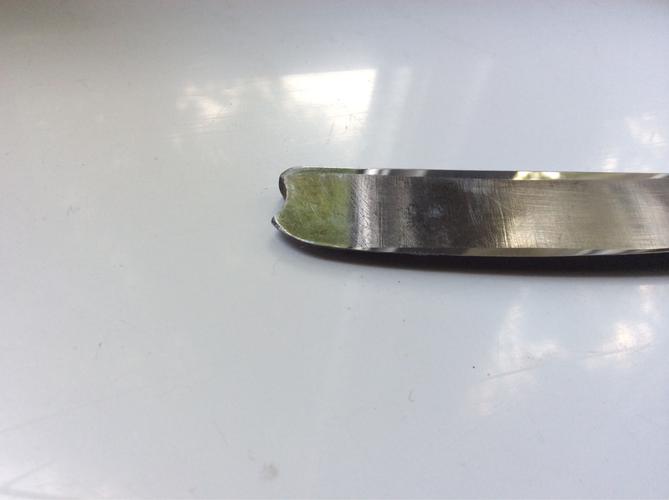
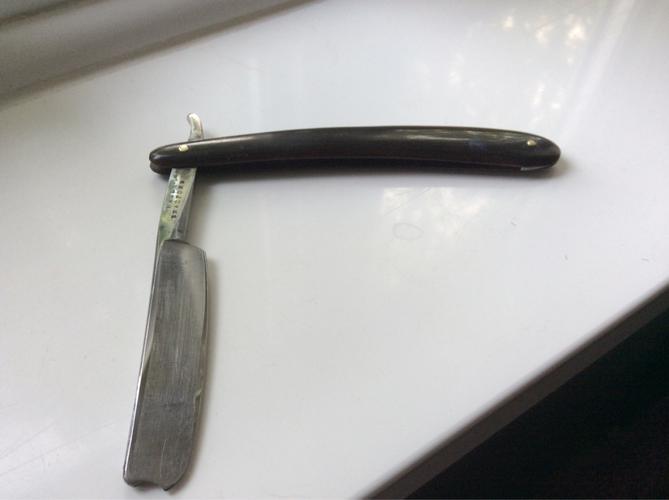
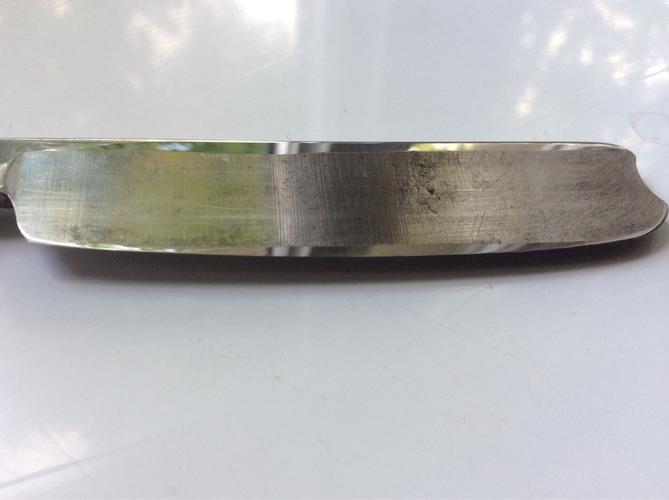
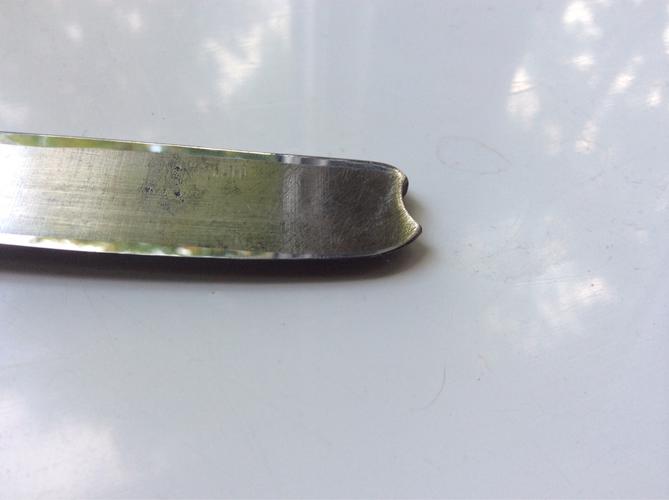
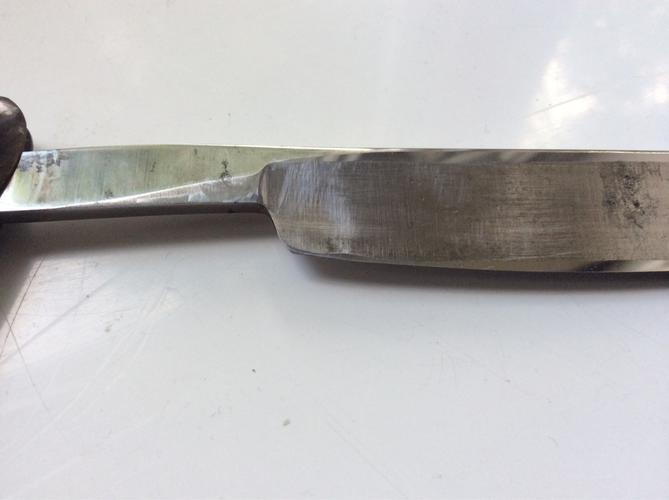
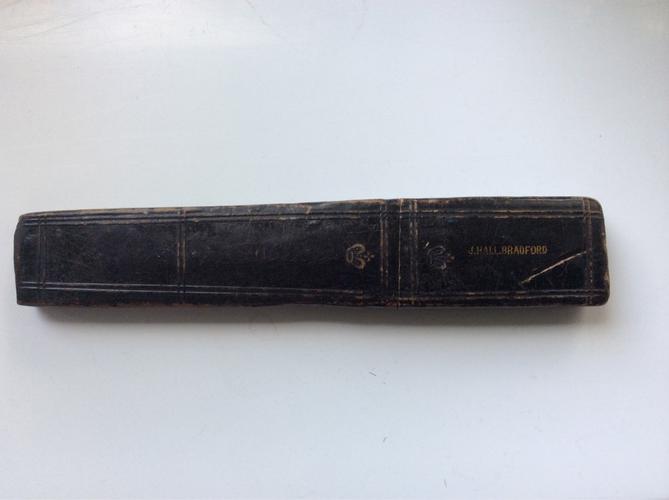


 5Likes
5Likes LinkBack URL
LinkBack URL About LinkBacks
About LinkBacks






 Reply With Quote
Reply With Quote